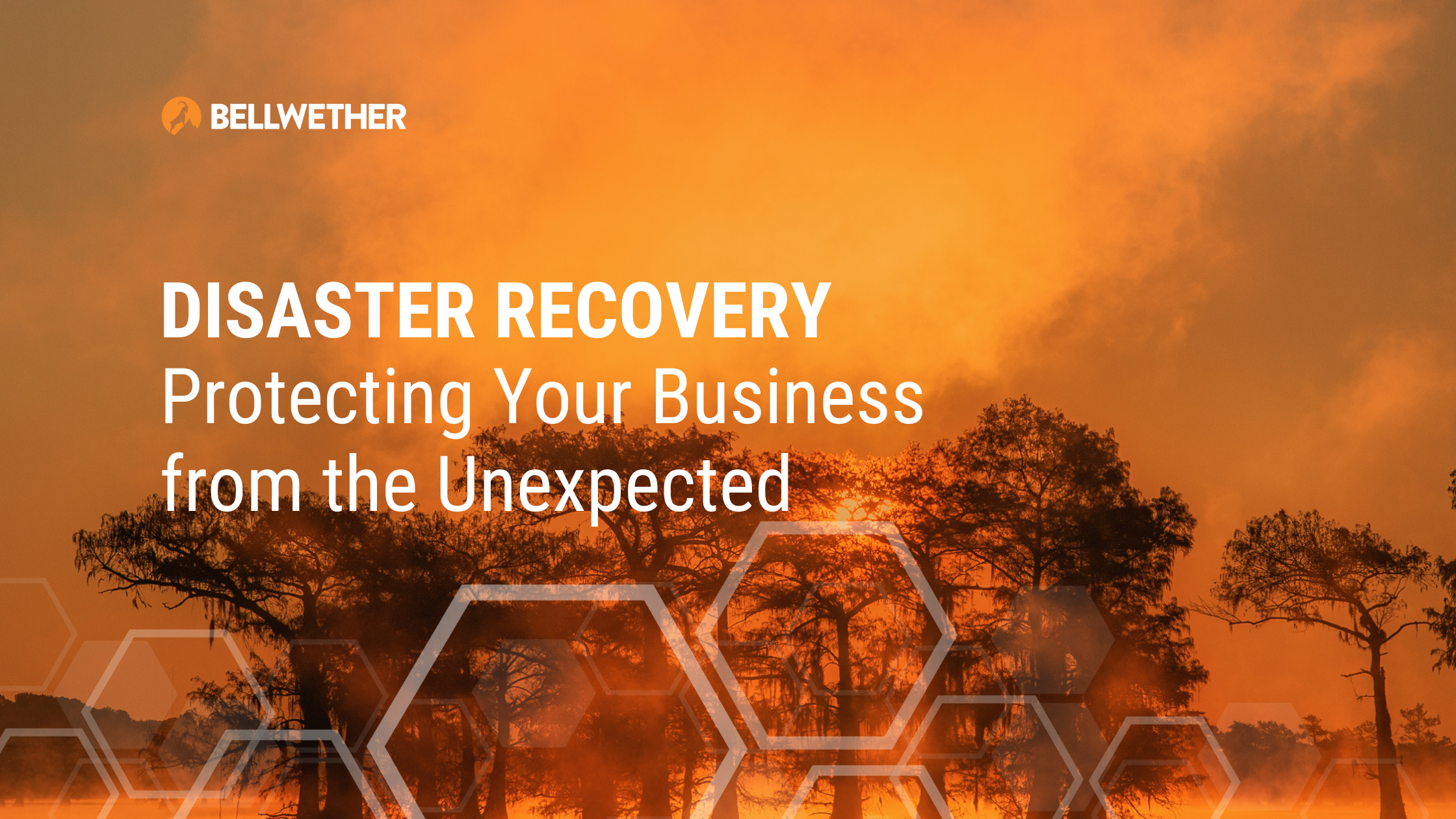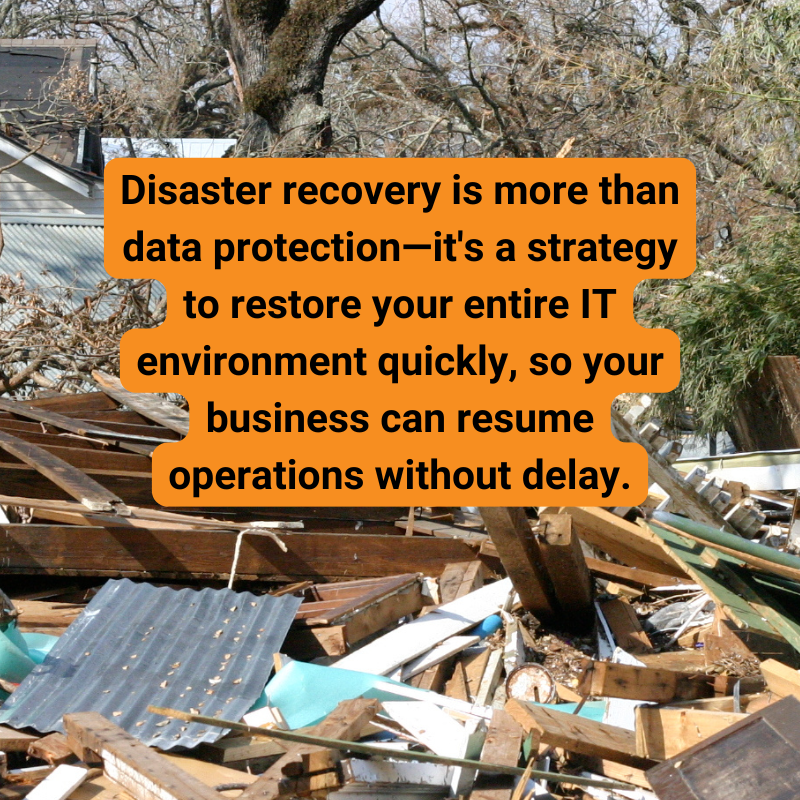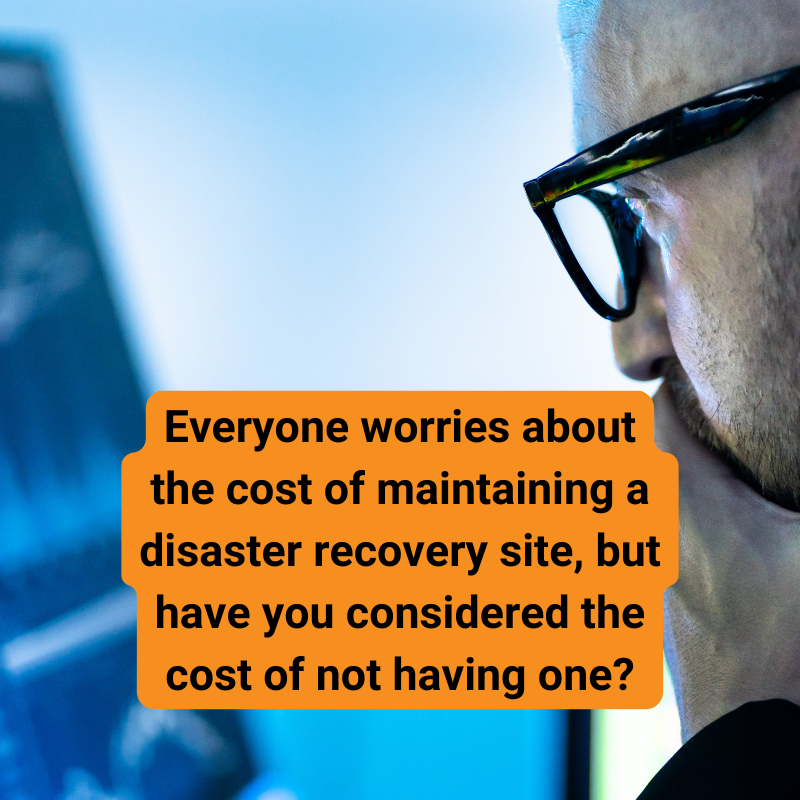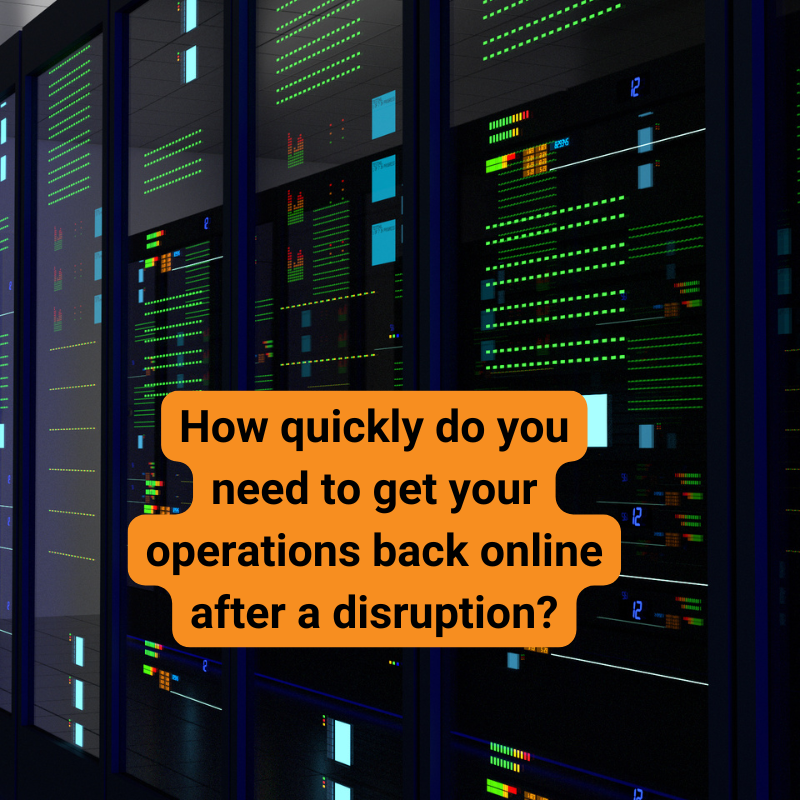
Disaster recovery isn’t just data backup; it’s a comprehensive plan to restore your entire IT environment and keep your business running smoothly, even when the unexpected happens. Whether it’s a natural disaster like Hurricane Katrina or a cyberattack that cripples your systems, a solid disaster recovery strategy ensures you’re prepared to bounce back quickly, minimizing the impact on your operations, reputation, and bottom line.
Here’s what we’ll cover in this article to explain disaster recovery and how it can keep your New Orleans business resilient when your operations are at risk:
- Understanding Disaster Recovery
- Why Backup Alone Isn’t Enough
- The Cost of Downtime
- Hot Sites vs. Cold Sites
- Scenario-Based Disaster Recovery Planning
- The Role of a Managed IT Service Provider in Disaster Recovery
- Is Your Business Prepared for the Unexpected?
Understanding Disaster Recovery
Disaster recovery goes beyond safeguarding your data. It involves a well-thought-out strategy that ensures your entire IT environment can be restored quickly, allowing your business to resume normal operations without delay.
A lot of folks think data backup and disaster recovery are the same thing. They’re not. Data backup is just one part of disaster recovery. Backups are crucial—they ensure your data is safe. Disaster recovery takes it further by focusing on how to restore your entire IT environment and get your business back on its feet.
Why Backup Alone Isn’t Enough

Understanding disaster recovery begins with recognizing that backups, while essential, aren’t the full solution. Backing up your data is a critical step in your plan, but it doesn’t guarantee that your business can quickly get back to normal operations after a disaster.
Imagine your building burns down. You might have your data safely backed up offsite, but without a comprehensive disaster recovery plan, restoring that data and getting your systems running again could take days or even weeks. During that time, your business could be losing revenue, damaging customer relationships, and struggling to maintain operations.
A full disaster recovery plan goes beyond just storing data. It addresses how to restore your IT environment, minimize downtime, and make sure that your business can continue with minimal disruption. This distinction is crucial because a backup alone can’t get your employees back to work, your customers back to buying, or your business back to full speed.
The Cost of Downtime

Have you ever really thought about what it would cost if your business was down for two weeks? How about a month? It’s not just the loss of revenue. Consider your reputation, your employees who can’t get paid, and your customers who can’t get the services they depend on.
Everyone worries about the cost of maintaining a disaster recovery site, but have you considered the cost of not having one? What happens when you can’t send out invoices, process payroll, or keep your customers happy? In the middle of a disaster, you’d give anything to get back up and running. That’s why it’s so important to weigh the cost of downtime against the cost of being prepared.
Backup Strategies as Part of Disaster Recovery
One of the most critical components of any disaster recovery plan is having offsite backups. Imagine your building catches fire or floods—if your backups are stored in the same location, they’re gone too. That’s why offsite backups are non-negotiable. They ensure that your data is safe and can be restored from a secure location.
But let’s not stop there. In today’s world, cloud-to-cloud backup is essential, especially if your business relies on cloud services like Microsoft 365 or Google Workspace. You might assume that your data is automatically protected because it’s in the cloud. Unfortunately, that’s not always the case. Cloud providers back up their systems, but they might not be responsible for your data. That’s why backing up your cloud data to another secure location is crucial.
Related: Cloud-to-Cloud Backup in the Age of SaaS
Hot Sites vs. Cold Sites
When planning for disaster recovery, a question you need to answer is – how quickly do you need to get your operations back online after a disruption? This is where hot and cold sites come into play.

Hot Sites: A hot site is essentially a duplicate of your primary IT environment, constantly updated and ready to take over at a moment’s notice. If your main site goes down, a hot site can keep your business running with minimal downtime. This is ideal for businesses that can’t afford even a short interruption in operations, but it comes with higher costs due to the need for real-time replication and maintenance.
Cold Sites: On the other hand, a cold site is more like a backup location that stays dormant until you need it. It has the necessary infrastructure to host your operations, but it isn’t constantly updated. In the event of a disaster, you’ll need to bring the cold site online and restore your data, which could result in some downtime. However, cold sites are significantly more cost-effective, making them a viable option for businesses that can tolerate a longer recovery time.
Whether you choose a hot site, a cold site, or a combination of both depends on your specific needs, budget, and how much downtime your business can afford.
Scenario-Based Disaster Recovery Planning
When developing a disaster recovery plan, one size doesn’t fit all. Different businesses have different needs depending on their infrastructure, how their employees work, and the specific risks they face. So, how do you know what kind of disaster recovery plan is right for your business? Let’s explore a few scenarios to answer that question:
Scenario 1: Remote Workers
If your team is primarily remote and relies heavily on cloud-based applications, what does disaster recovery look like for you? In this case, your data and applications may already be hosted in the cloud, making your day-to-day operations less vulnerable to on-site disruptions.
However, just because you’re using cloud services doesn’t mean you can skip disaster recovery planning. You still need to ensure that your cloud data is backed up and that your remote employees can continue to access the tools they need, even if something goes wrong.
Scenario 2: Hybrid IT Environments

What if your company uses uses a blend of traditional infrastructure (like on-premises servers) and cloud-based services? In this case, disaster recovery planning becomes more complex, as it may require both on-site backups and cloud failover solutions.
If you’ve integrated services like Azure, you might rely on your cloud provider’s failover systems. However, it’s important to ensure these systems align with your specific Recovery Time Objective (RTO) and Recovery Point Objective (RPO) requirements..
Scenario 3: Companies with On-Premises Infrastructure
What if your business prefers or is required to keep all IT infrastructure on-site, perhaps due to compliance or security concerns? In this situation, disaster recovery becomes even more critical.
You’ll need to consider solutions like hot or cold sites and offsite backups to ensure that you can restore operations in case of a disaster. The challenge here is balancing the need for rapid recovery with the costs involved in maintaining these disaster recovery resources.
In each scenario, the fundamental question is: How quickly do you need to get your business back online, and how much data can you afford to lose? The answers to these questions will shape the disaster recovery strategy that’s right for your business.
The Role of a Managed IT Service Provider in Disaster Recovery
Developing, maintaining, and implementing a disaster recovery plan isn’t a one-time task—it requires ongoing expertise and attention. That’s where a managed IT service provider becomes invaluable. Here’s how they help:
Expertise in Planning: Managed IT service providers bring extensive experience to the table. They can assess your unique business needs and help you design a disaster recovery plan that aligns with your operations, risk tolerance, and budget.
Ongoing Management: Once your plan is in place, it needs to be maintained and regularly tested. A managed IT service provider ensures your disaster recovery plan stays up-to-date and ready to deploy at a moment’s notice.
Swift Implementation: In the event of a disaster, every second counts. Managed IT service providers are equipped to implement your disaster recovery plan swiftly, minimizing downtime and helping your business recover quickly.
Working with a managed IT service provider ensures that you’re not navigating the complexities of disaster recovery alone. You’ll have a team of experts by your side, ready to protect your business whether you’re experiencing a natural disaster or some other type of crisis that threatens your operations.
Is Your New Orleans Business Prepared for the Unexpected?
New Orleans businesses are no strangers to unexpected challenges, from hurricanes and flooding to power outages and cyber threats. Disaster recovery is not just a precaution—it’s a necessity for protecting your operations, employees, and customers. The ability to bounce back quickly after a disruption is what keeps your business resilient in the face of adversity.
If you haven’t reviewed your disaster recovery plan lately, now is the time. And if you don’t have a plan in place, it’s critical to develop one. Reach out to us to schedule a consultation, and let’s make sure your business is ready for anything, no matter what comes your way in New Orleans.
Learn more about disaster recovery services from Bellwether.
